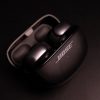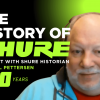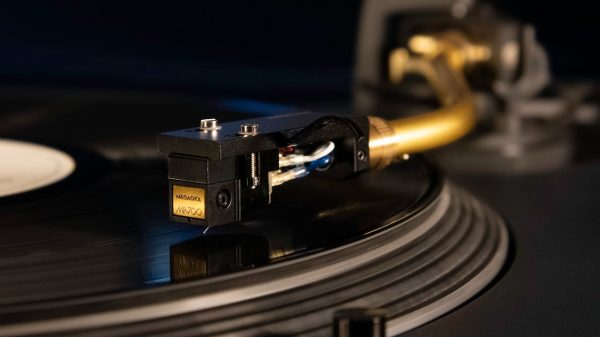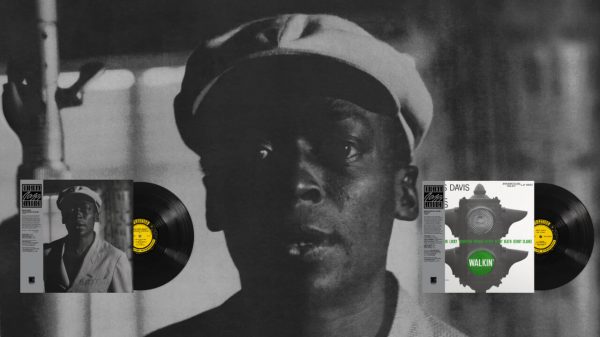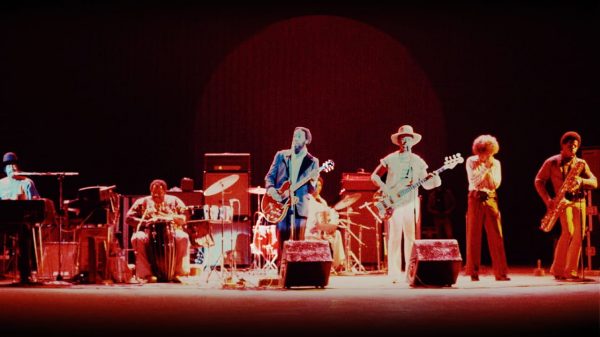NEW RELEASE PICKS:
Marc Ribot’s Ceramic Dog, Hope
Buy at Amazon (Northern Spy)
Last October, this trio (Marc Ribot on guitar and vocals, Shahzad Ismaily on bass and keyboards with backing vocals, Ches Smith on drums, percussion and electronics with backing vocals) released the pandemic EP “What I Did on My Long Vacation,” a strong set notable for being studio recorded in May of 2020, but with heavy precautions, as everyone was set up in separate rooms (none of the three actually laid eyes on each other while recording). Well, that CD (now sold out) was effectively a teaser for this full-length behemoth (available June 25 on 2LP and CD), which was the byproduct of the same May sessions. It extends Ceramic Dog’s focus on matters social and political very nicely, though this characteristic isn’t as strident as it is on 2018’s YRU Still Here? Saxophonist Darius Jones returns from the EP, bringing the skronk and helping to reinforce the group’s blend of avant-jazz and punk rock. Ceramic Dog is made up of exceptionally gifted players, but just as important is their constant avoidance of the stale. A-
Lucy Gooch, “Rain’s Break”
This recording was inspired by the technicolor films of Michael Powell and Emeric Pressburger, which isn’t exactly common. The best known prior example is Kate Bush’s 1993 album The Red Shoes, a fact doubly germane here, as Gooch, who’s based in Bristol, UK (originally from Norfolk) and a recent arrival on the scene (there is a prior EP, “Rushing,” dating from last year), has been likened to Bush. Listening to “Rain’s Break” (available on vinyl and CD with a gorgeous cover) reveals an ethereality that supports the comparison, though the similarities are never overpowering. This is partly because Gooch is operating with just a synth and her voice, rather than drawing on a wide array of instruments (often in the hands of an all-star supporting cast) as Bush regularly did in the shaping of her discography. However, Gooch’s work is bright, sturdy and unpredictable; she’s been additionally compared to Bjork, Julianna Barwick and Mary Lattimore, but upon consideration, I don’t think I’d have come to those conclusions on my own. Assured and promising. A-
REISSUE/ARCHIVAL PICKS:
Dyke & the Blazers
Led by Arlester “Dyke” Christian and based in Phoenix, AZ (with roots in Buffalo, NY), Dyke & the Blazers are responsible for one of the essential funk music building blocks with the 1967 two-part single “Funky Broadway.” Now, many will recognize the song through Wilson Pickett’s version, which arrived shortly thereafter and overtook the original on the charts, hitting #1 R&B and rising to #8 Pop (Dyke & the Blazers peaked at #17 and #65, respectively), but as is often the case, the superior version came out first, though as pointed out by Alec Palao in his notes for the first of these two volumes, there is a lack of finesse in Dyke’s raw belting and the Blazer’s relentless combination of density and velocity, so that the whole was likely just too potent to attain smash hit status.
Being overtaken by Atlantic’s powerhouse national distribution was surely another factor in the single’s moderate chart showing, but I’ll reemphasize that Dyke & the Blazers’ approach, in a manner akin to James Brown & the JB’s (who were obviously influenced by “Funky Broadway”), was just too much for many to handle. And listening to these two collections in 2021, it might still be that way. The material on Phoenix in particular documents a band that’s variations on a template are tackled without concern for stylistic breadth (Dyke essentially didn’t do ballads, with “I’m So All Alone” an exception). The move to Hollywood did usher in some refinements as the studio players shifted to the Watts 103rd Street Rhythm Band, but there is still a focus on collective power and grit over individualist flair (the lack of solos is striking, and the drums smack hard). But the fine-tuning in terms of arrangements does magnify Dyke’s limitations as a frontman, but he’s never short on emotion. I rate both sets as essential for budding soul and funk collectors. The Phoenix stuff is just massive… A-/A-
Russell Potter
A Stone’s Throw
Buy at Amazon (Tompkins Square)
Neither Here Nor There
Buy at Amazon (Tompkins Square)
These two albums, both offered on vinyl in editions of 500, are the latest full reissues of artists featured on Tompkins Square’s Imaginational Anthem Vol. 8 : The Private Press; the others are from Larry Conklin / Jochen Blum, Tom Armstrong and Rick Deitrick. As the title of the compilation makes plain, its contents derive from privately pressed LPs (i.e., releases paid for by the artist themselves), which in genres other than American Primitive guitar, can often make for an oddball listening experience (to varying degrees). In the case of Potter, it simply means he was out of step with popular trends; A Stone’s Throw came out in 1979, Neither Here Nor There two years later. While the influence of John Fahey is readily apparent, Potter engages with the master’s style rather than merely imitating it, and he includes distinctive detours con both LPs, a vocal number on the first and a wild excursion on electric guitar on the second (a Fahey cover) plus some nods to traditional Irish airs. Potter is skilled and diverse. A-/A-
Rose City Band, Earth Trip
Buy at Amazon (Thrill Jockey)
Rose City Band is the handiwork of guitarist and songwriter Ripley Johnson, who’s also part of Moon Duo and Wooden Shjips. That’s worth pointing out, as the moniker here suggests some degree of creative interaction if not equality. Rose City Band’s not a fully solo deal, but Johnson’s indisputably the man in charge. He also sings, with his tunes radiating a West Coast country-rock vibe (Barry Walker guests on pedal steel) with psychedelic touches. Johnson expands upon this in the PR for Earth Trip, explaining that he was striving to capture the feeling that arises when the psychedelics are just starting to kick in, but the trip hasn’t fully taken hold yet. You know what he’s talking about. Or maybe you don’t. If not, understand that the mingling of anticipation and calm is an exquisite feeling, as is the heightening of awareness as reality is beginning to distort. Earth Trip’s atmosphere reflects this state of being exceptionally well, mellow but not insubstantial, and drifting outward (and peaking with finale “Dawn Patrol”) while remaining tied to song structure. A-
Soledad Brothers, The Hardest Walk
Buy at Amazon (Alive Naturalsound)
Consisting of guitarist-vocalist Johnny Walker, drummer Ben Swank, and guitarist-saxophonist Brian Olive, the Soledad Brothers came together in Maumee, OH in 1998 as part of the decade’s garage punk boom (first LP on Estrus), and with an inclination toward the bluesy. I checked them out back then and thought they were cool enough if not brain-frying, and with some late ‘60’s-early ’70s Stones derived moves, I do recall, but by the time this album, their last, had arrived in 2006, I’d lost track. And so, I come to The Hardest Walk with fresh ears. After a few spins, it becomes clear that they remained cool enough right up to the end. But even after expanding their range a good bit, the similarities to the Stones do remain, which is not a problem, it’s just that the synapses remain uncooked. But I will clarify that they are far from copyists, and additionally, it actually works in the band’s favor that the added range isn’t exactly trailblazing, whether it’s the MC5-ish energy jazz freak-out or the nods to Dr. John-like swampiness. A likeable record. B+
T-Model Ford, I Was Born in a Swamp
Buy at Amazon (Alive Naturalsound)
Hailing from Mississippi, James Lewis Carter Ford, who was (probably) born on June 23, 1923, and who lived until July 16, 2013, was amongst the last of the great rural blues discoveries, not hitting record until 1997 as part of an unexpected resurgence of raw and undiluted juke joint-styled mania that effectively put the Fat Possum label on the map. Adopting the memorable sobriquet T-Model as he extended the blues tradition of distinctive monikers, Ford cited Muddy Waters and Howlin’ Wolf as prime influences, with the impact of both discernible on this compilation, which is described as the “best of the Alive sessions.” The recordings were initially released in 2010 on the albums Taledragger and The Ladies Man, with the former dishing it out loud and ragged like it’s Saturday night in a smoky backwoods dive, and the latter considerably less amped-up and more intimate. GravelRoad and Moreland & Arbuckle are amongst the accompanists here, with everyone acquitting themselves well, but T-Model is in strong form, front-and-center. A-


















